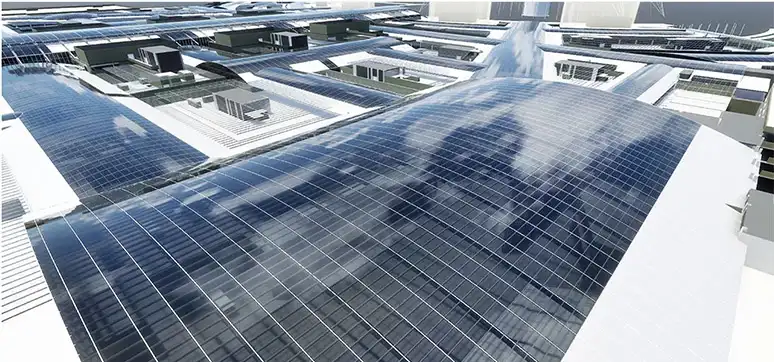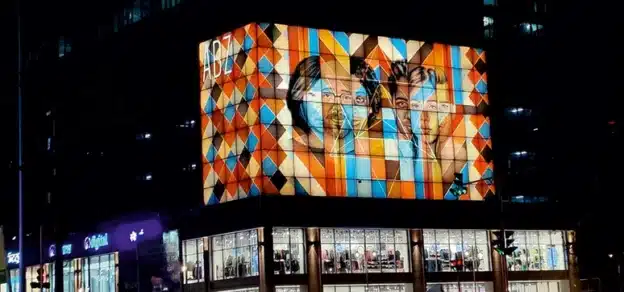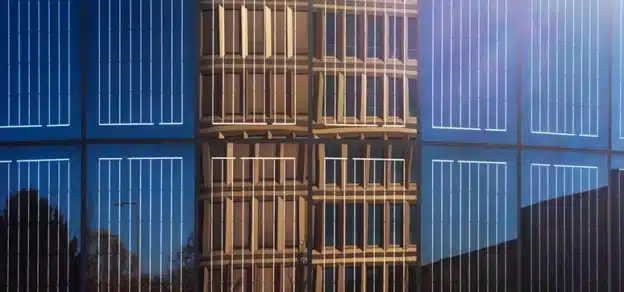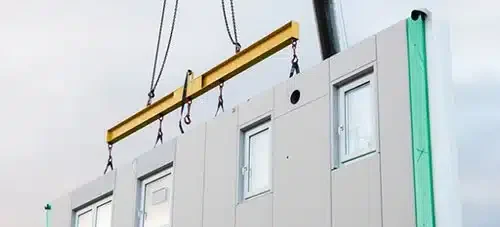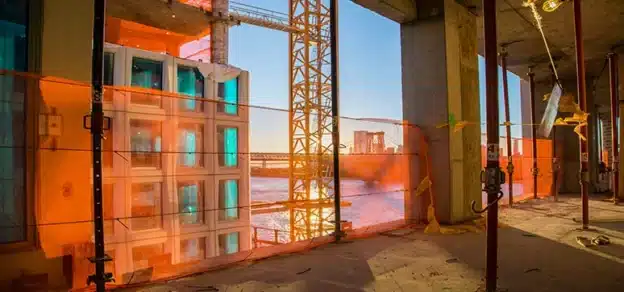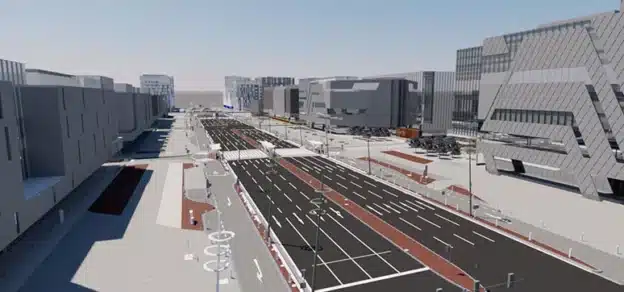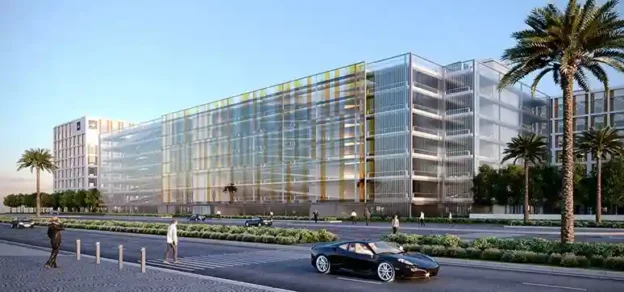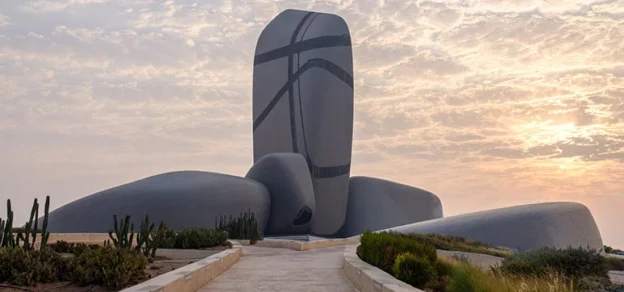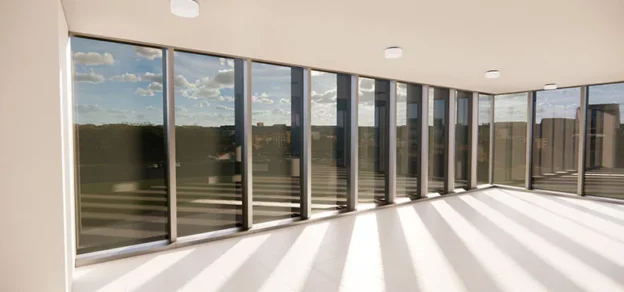A century ago, in 1918, the first generation of cars looked much like a wooden cart with an engine mounted onto it, steering wheels were just starting to replace the tiller, and 50km/h was considered breakneck speed. When compared to the latest Tesla or BMW electric sports cars, these early automobiles simply pale. Similarly, the Curtiss NC-1 biplane of 1918 had a maximum speed of 144km/h and a range of 2,500km, while the modern Lockheed Martin F-22 Raptor features a top speed of 2,500km/h in addition to a host of other high-end capabilities unimaginable back in 1918. Perhaps even more striking is the evolution of Information Technology. Only fifty years ago, a computer that was capable of performing only the most basic of tasks would have filled a very large room. Today, most of us have smart phones in our pocket that can perform the same tasks a billion times faster.
Looking at construction technology one hundred years ago compared to the present day, the differences between concrete- or steel-framed buildings of now and then may not be immediately obvious to the untrained eyes. On the other hand, façade technology has evolved and improved by leaps and bounds in that same period. There isn’t much in common between the early days of small hand-blown glass panels in steel frames to the modern fully aluminium unitised, pressure equalised and fully drained curtain walls with low-emissivity double-glazed units. It thus seems appropriate to carry out a systematic review of the various new and upcoming techniques in the design of building envelopes.
BIM DOCUMENTATION
Just a few short years ago, BIM technology started its unstoppable ascension, even becoming the de facto method required to be used for submissions and applications to local authorities in some countries, including Singapore and the UK. The benefits of BIM are clear: closer coordination between various disciplines, detection and avoidance of clashes, 3-dimensional modelling of buildings, as well as a host of other advantages, depending on the savviness level of the design team. Yet, as is often the case with drastic changes, strong resistance to the progression of BIM could be felt throughout the façade industry. I should confess that I was one of those that could not see its advantages through the hurdles linked to its implementation.
Now, two years after our team has made the leap into full BIM implementation and documentation of the building envelope, I feel that there is no turning back, and it is all for the better. Clearly, shifting to BIM design of façades requires strong commitment, since the training and mindset needs to evolve. However, once the initial investment is made, it pays off quickly. The whole documentation process is much faster and accurate as compared to traditional CAD drawings. More importantly, because the façade is designed comprehensively in three dimensions, revisions and amendments are very easy to implement, and section, plan, elevation and detail drawings are always consistent. The adoption of BIM effectively eliminates the risk of discrepancies between different sets of drawings and between different disciplines.
INTEGRATIVE DESIGN
Buildings are becoming increasingly complex, with more and more components and disciplines making their way into new developments. Coordination between these various disciplines by traditional means is a major source of problems and inefficiencies in the design process. Integrative design aims at ironing out such issues by allowing the various actors involved in the design process to work concurrently, in parallel, and on the same platform. This makes this whole very efficient, and ensures that the works of various designers is fully coordinated at all times, and avoids multiple iterations and back-tracking.
When it comes to the design of building envelopes, through this integrative approach, the façade designer is able to work in tandem with the sustainability consultant, for instance. The latter can carry out building physics study in real-time, as the façade is being designed and documented. Similarly, the structural analysis of the façade elements and the incorporation of night lighting components can both be realised in conjunction with the model-building process on the BIM platform.
PARAMETRIC MODELLING
One of the buzzwords that has hit the construction industry in recent times has to be “parametric modelling”. While many talk about it, few actually implement it. The idea of parametric modelling is simple: set a certain number of variable parameters in relation of the component being designs (e.g. window-to-wall ratio, panel modulation, building orientation, visible light transmittance, etc.), assign a certain range to these parameters, then have the design software work out the resulting designs for each incremental variation of these variables, and finally, extract the ideal solution (it could be the one offering the slimmest members, the best thermal performance, or the lowest cost, for instance) from this collection of possible design approaches.
While often associated with highly organic and complex geometries, this technique can actually be applied to virtually any type of development or building component, regardless of its complexity. It allows building designers to make highly informed decisions rather than guesstimating the ideal situation.
REAL-TIME RENDERING
Architects and designers who are in their forties and above surely remember how painstaking the rendering process used to be not so long ago. It took extremely careful planning before starting the production process, as the latter would take several hours, if not more, and any mistake would take the same amount of time to correct.
This is all changing at a rapid rate with the arrival on the market of realtime (or near-real-time) rendering software. As the designer builds the BIM model, adding, removing and shaping components, the rendering software updates the visualisation instantaneously. The benefits are clear. Architects and designers are able to view the rendering immediately, for comparison with their mental picture of the project. Similarly, clients can navigate the project at all stages, enabling prompt decision-making, and speeding up the approval process.
In terms of façade design, in particular, many material suppliers (glass, cladding, paints, etc.) are hopping onto this bandwagon, allowing the software producers to make the results as close to reality as possible. This means that the visualisations generated are highly photo-realistic. Since it is possible to test multiple combinations of materials and finishes in real-time, I would not be surprised if VMUs, which currently stands for Visual Mock-Ups of façades, eventually turns out to mean Virtual Mock- Ups.
VR/GAMIFICATION
The newer generation of designers, who belong to the Gen Z or Millennial generation, have a completely different approach to the design process. They are much more techsavvy, and rely extensively on computers. In parallel, they tend to have shorter attention span and become more easily bored than previous generations. These are generalisations, obviously, but they highlight the need to adapt work methods to these younger designers.
Queue in virtual reality: using dedicated goggles and other accessories, designers can fly through the model and interact with it, literally building a model while being visually immersed into it. This approach is reminiscent of video games, whereby the creation process is much more fun and interactive, thus the nickname of “gamification” of the design process. Beyond the creation process, virtual reality is increasingly appreciated from developers and investors, as they can experience the completed product even before the start of the construction works on site.

AI Predictive Design
A term first coined in in the early 1940’s, artificial intelligence (AI) is intelligence demonstrated by machines, in contrast to the natural intelligence displayed by humans. The term “artificial intelligence” is commonly used when a machine mimics “cognitive” functions that are typically associated with the human mind, such as learning and problem-solving.
In the context of building design, AI refers to emerging design approaches, where dedicated systems are fed very large amounts of information from existing projects and other sources, this information is digested and “learned” by the system, such that it can then assist designers in making very quick, informed decisions regarding the best possible design directions to adopt. Using the 80/20 principle (80% accuracy based on 20% of the effort), architects can obtain answers from AI systems regarding optimal building orientation, site layouts, window-to-wall ratio, sunshade arrangements, material properties, and an incredible array of other information. This is all produced within just a very short time (typically one or two hours, depending on the size of the development), and backed by proven facts and experience.
Final Words
In summary, there exists a host of new technologies that are starting to make headways in the design of façades, improving both the quality and the efficiency of the design process. Resistance to change is inherent to the human nature, but embracing these advances is essential for façade designers who do not want to be left behind.
